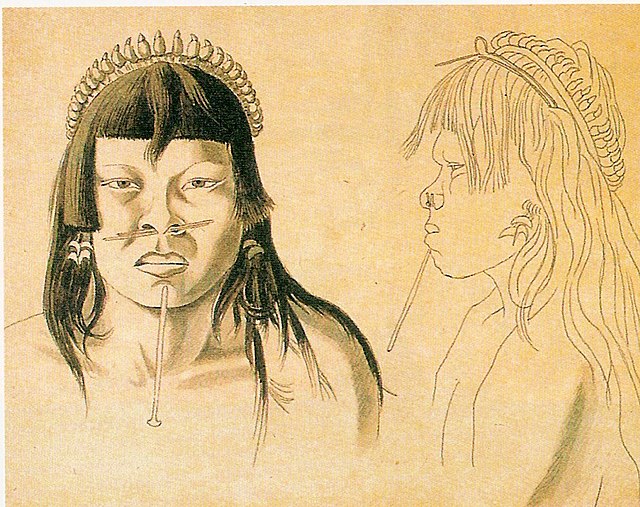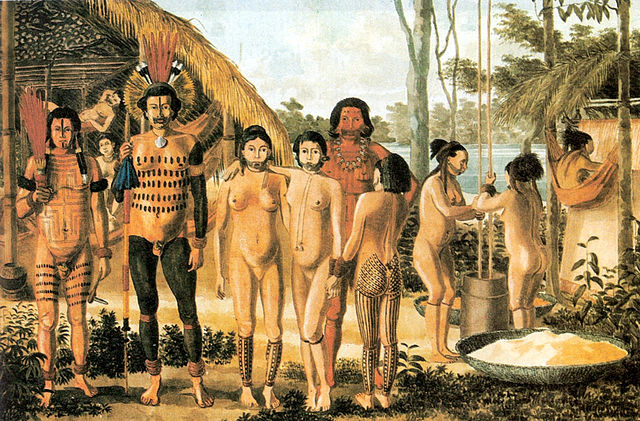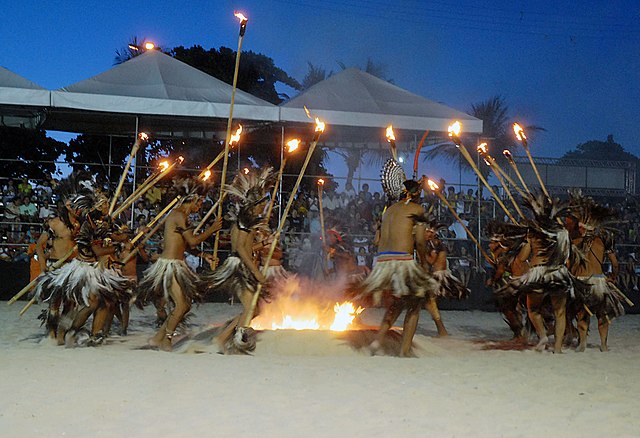The Bororo are indigenous people of Brazil, living in the state of Mato Grosso. They also extended into Bolivia and the Brazilian state of Goiás. The Western Bororo live around the Jauru and Cabaçal rivers. The Eastern Bororo (Orarimogodoge) live in the region of the São Lourenço, Garças, and Vermelho Rivers. The Bororo live in eight villages. The Bororo are an ethnic group in Brazil that has an estimated population of just under two thousand. They speak the Borôro language and are mainly of animistic belief. They live in eight villages in the central areas of Mato Grosso. A famous exponent of this group is Cândido Rondon, a Brazilian army official and founder of Fundação Nacional do Índio. Bororo's culture was closely studied by French anthropologist Claude Lévi-Strauss during his expedition to Amazonia and Mato Grosso (1935–1936), described in his famous book Tristes Tropiques (1955).
Bororo-Boe man from Mato Grosso at Brazil's Indigenous Games, 2007
Bororo-Boe man from Mato Grosso at Brazil's Indigenous Games, 2007
Funeral banquet of Bororo Indians in engraving by Friedrich Wilhelm Kuhnert (1865–1926)
Portrait of an Amerindian Bororo, by Hercules Florence, during the expedition conducted in the Brazilian Amazon by Grigory Langsdorff from 1825 to 1829.
Indigenous peoples in Brazil
Indigenous peoples once comprised an estimated 2,000 tribes and nations inhabiting what is now the country of Brazil, before European contact around 1500 AD.
Xingu, an Indigenous territory of Brazil
Apiacá people, painted by Hércules Florence, 1827
Indigenous girl of the Terena tribe
Terena people








